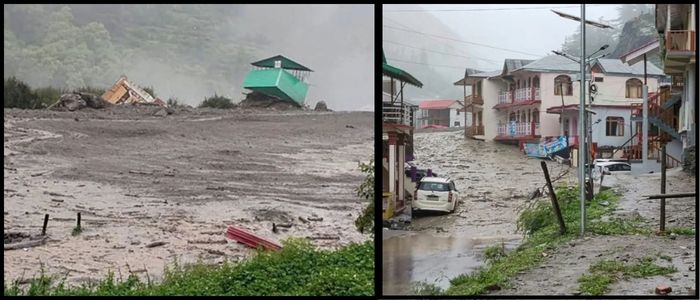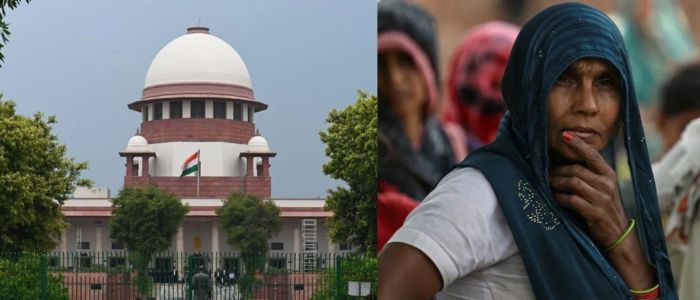Footage taken during the incident featured a torrent of brown water sweeping away across the city, with locals heard yelling in fear as they fled. High intensity floodwaters hit the state while many villagers were gathered in a local temple to celebrate a festival.
Four were killed, according to Indian Defence Minister Sanjay Seth, and authorities warned the toll could rise. Nearly eight men are missing from a neighbouring camp, and other slurry sliding across the hills is feared to have wiped away many more.
Since Tuesday, rescue operations have been ongoing with teams working through the night regardless of heavy rains and blocked roads that make it difficult for vehicles to reach affected areas.
Warning of Even More Danger; Rescue Efforts
Colonel Harshvardhan, who is leading the relief operation, said that his team has been continuously working to spot and evacuate survivors. Chief Minister Pushkar Singh Dhami said the priority was to expedite relief and rescue efforts "on a war footing".
The Indian Meteorological Department said the flooding was caused by an "extremely heavy" 21cm (8 inches) of rain in some parts of Uttarakhand, and described it as a sudden cloudburst that resulted from mantle collapse in icy Himalayan glacier lakes.
Rescue operations have been rendered difficult by the continued rain, with rivers at danger levels across the state and crops destroyed due to flooding, as well as several roads completely washed away.
The Central Water Commission said four rivers at five different locations in Kerala have been flowing in a 'severe flood situation', posing a threat of landslides and flooding.
After the Indian Army dispatched 150 soldiers to Dharali, they succeeded in saving around 20 people. Army officials said a giant mudslide caused the rapid rush of ice-cold sludge and water through the town.
Images released by the army showed homes half-buried under a thick caking of mud and a languid grey river of slushing waters mingling with debris.
Army personnel Suneel Bartwal said, "Search and rescue operations are in full swing, and all possible resources have been mobilised to help those stranded. Prime Minister Narendra Modi tweeted condolences and assured all possible help from relief and rescue agencies in the area.
Caution: As Climate And Environmental Concerns Rise
Monsoon rains cause widespread floods and landslides every year in India, but the impact has been increasingly severe as changing rainfall patterns see longer dry periods followed by heavier deluges.
Last month, the UN's World Meteorological Organization warned that widespread floods and crippling droughts this year were proof that "Earth has now warmed 1.2 degrees Celsius (2.16 Fahrenheit) over the last century, driving further sea level rise and more frequent heatwaves, as well as increasingly extreme weather.
What made Uttarakhand particularly suitable for this kind of devastation is its mountainous and, relatedly, highly unstable geography. Over 4000 people died in the Kedarnath floods of 2013.
Also, more than 200 individuals passed on after a glacier burst in Chamoli caused an avalanche in 2021.
Harjeet Singh, a climate expert, said the latest disaster was "a cocktail of death. He cautioned that global warming, which is increasing monsoons and local development policies leading to deforestation, reckless construction, and interruption of river flows, is weakening the natural fortification of the region.
Dharali Search teams in the rubble. As search teams continue sifting through layers of mud to comb for dead bodies in Dharali, tragedy strikes yet another grim signal of increased dangers from more intense bouts of extreme weather intersecting with unstopped chaotic development in dangerous terrains.
Top

Flash Flood in Northern India Leaves 100 Missing

A flash flood struck the town of Dharali in a remote part of northern India's Uttarakhand state on Tuesday, causing widespread damage. At least five people, including two senior officers of the Border Roads Organisation, are feared dead, and around 100 are missing in a sudden deluge that hit the Nilgrath valley this evening, washing away scores of buildings, plummeting many more as the flood passed, taking along whatever came its way.











